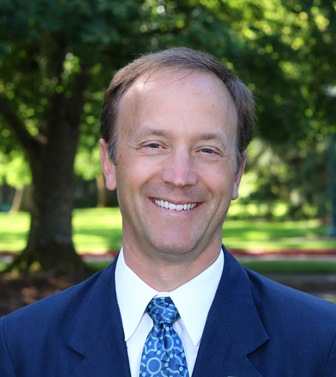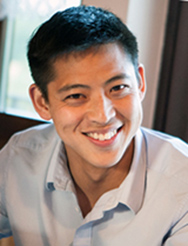Building a Preeminent Research Program: The Center for NeuroGenetics
As an introduction to this newsletter, please check out a video created by Eric Wang, Ph.D., who is joining UF as an assistant professor of molecular genetics and microbiology in the Center for NeuroGenetics. This edition of On The Same Page is the story of how new and existing faculty can come together to create preeminent research programs.
In the UF community, the concept of “preeminence” has been used quite a bit of late. Florida’s “Preeminence Bill,” signed into law during the 2013 legislative session, designated the University of Florida as a preeminent university in the state. To help UF attain its goal of becoming a top 10 public university, a section of this bill provides funds to UF for the purpose of attracting outstanding faculty to advance our research mission.
The word “preeminence” might initially sound a bit jarring to some, as it carries with it a sense of swagger. Across the UF campus, however, we have become comfortable in using this term, as it conveys purpose and commitment. In this context, it is important to recognize that the development of preeminent academic programs at UF necessarily involves collaboration between existing faculty and newly recruited investigators. At UF Health, our research stature over the next five to 10 years will thus depend on our ability to build successfully on existing strength.
There are many examples in which we are developing high-impact research groups that are doing just that: programs that began with longstanding and highly productive faculty, became stronger with additional faculty members in the past five years who provided scientific leadership as we “reached for excellence” under Forward Together, and now are pointing toward preeminent status with the addition of new faculty. In some instances, new faculty members are being recruited with internally generated resources. In the case of more established investigators, funds from the preeminence initiative may be used. Taken as a whole, across time we are developing some very powerful research programs that are leading the way in their fields.
An exciting example of such a research program is the Center for NeuroGenetics, which links back to our scientist/videographer Dr. Wang, who is moving this summer to UF from MIT, and another new faculty member, Dr. Andrew Berglund, who is joining us from the University of Oregon.
The story begins in 2010, when Laura Ranum, Ph.D., a neurogeneticist at the University of Minnesota, was invited to UF by Henry Baker, Ph.D., a professor and chair of the Department of Molecular Genetics and Microbiology. Dr. Baker knew of the potential scientific synergies between the work of Ranum and that of several UF faculty, and hoped that he could lure her to Gainesville. Indeed, she admired the work of several UF investigators who were working to understand the molecular basis of ataxia and myotonic dystrophy, and had already established collaborations with them: Drs. Maurice Swanson (associate director of the Center for NeuroGenetics and a professor of molecular genetics and microbiology), Tetsuo (Tee) Ashizawa (a professor of neurology and director of UF’s Evelyn F. and William L. McKnight Brain Institute) and S.H. Subramony (a professor of neurology). Ultimately, she made the decision to move to UF; her vision was that she could build a broad program here that would “change our understanding of the genetics of neurological disease.”
 Laura P.W. Ranum, Ph.D. Director of Center for NeuroGenetics & Professor of Department of Molecular Genetics and Microbiology
Laura P.W. Ranum, Ph.D. Director of Center for NeuroGenetics & Professor of Department of Molecular Genetics and MicrobiologyThe concept for the Center for NeuroGenetics thus emerged. While its hub would be in the Department of Molecular Genetics and Microbiology, Ranum envisioned that center members would include many other departments and institutes, including aging and geriatrics, biochemistry, pathology, pediatrics, physiology, neurology, neuroscience, the McKnight Brain Institute, the UF Genetics Institute and the Department of Applied Physiology and Kinesiology in the College of Health and Human Performance.This vision has now become a reality. Ranum arrived in November 2010 and jump-started the Center for NeuroGenetics, bringing together experts in various disciplines to study genetic disorders that affect the nervous and muscular systems. These disorders include amyotrophic lateral sclerosis, or ALS, myotonic muscular dystrophy, Huntington disease and the spinocerebellar ataxias. Progressing inexorably over a period of years, these diseases result in an insidious decline in personal health, and ultimately death. They can strike children or adults and, in addition to personal tragedy, result in significant costs in lost productivity and the need for long-term health care. Due to Florida’s large population and high percentage of aging individuals, the medical, societal and economic burden of these disorders is especially significant in this state. Although there have been significant efforts to understand and treat these genetic disorders, progress has been slow. Under Ranum’s leadership, and with strong interdisciplinary collaborations, UF’s Center for NeuroGenetics is now gaining international attention as a leader in innovative research on the genetic causes of neurologic disease.
For example, Dr. Swanson’s group has made a series of discoveries in myotonic dystrophy, showing that a category of disease-causing mutations produce toxic RNAs that deplete key factors required for normal functions within the nuclei of cells. These and several other discoveries indicating the RNA itself could be toxic were unexpected, as RNA was previously considered to be a benign messenger whose function was to transfer information from DNA to proteins.
Working on a separate disease, spinocerebellar ataxia type 8, or SCA8, Ranum and Tau Zu, M.D., an assistant professor of molecular genetics and microbiology who was recruited with Ranum to UF, made two additional discoveries. One was that disease-causing “expansion mutations,” in which the letters of the genetic code (e.g., CAG CAG CAG CAG) are repeated too many times, can be expressed in two directions. Suddenly there were two genes to worry about instead of just one. More recently, Ranum and Zu discovered that a cellular traffic light that scientists thought provided a critical signal required for cells to make proteins does not apply to expansion mutations. These mutations cause the protein-making machinery of the cell to run molecular “red lights,” producing up to six unexpected proteins that can accumulate in the brains of patients. The technical name for these proteins is Repeat-Associated Non-ATG, or RAN, proteins.
Each of these discoveries has taught us basic lessons about how genes work, and have paved the way for similar discoveries in other diseases. In fact, toxic expansion RNAs, bidirectional gene expression and the accumulation of RAN proteins are now thought to play a role in more common diseases, including a common form of ALS and dementia. In the past several years, Ranum and Swanson have been recognized for their innovative science with a $1 million grant from the Keck Foundation for innovative science to study RAN translation and a five-year $6 million program-project grant from the NIH to understand the effects of the myotonic dystrophy mutations on the brain. This adds to more than $5 million in additional funding awarded to the Center for NeuroGenetics from the National Institutes of Health, the Muscular Dystrophy Association, ALS Association, Target ALS, the Marigold Foundation and the Cure Huntington’s Disease Initiative. Some of the funding for ALS resulted from the Ice Bucket challenge, which you may remember from last summer.
In addition to identifying common themes in diseases that initially seem distinct, Ranum and her colleagues have worked with patients afflicted with neurogenetic diseases to discover the genes that cause their disease and how these diseases impact their lives. For example, 10 years ago, myotonic muscular dystrophy was mostly known as a disease that affects the skeletal muscle and causes muscle wasting and contractions. Although this is true, Ranum states that “our understanding of this disease changed when a patient affected by the disease explained that her biggest concern was not the effects of the disease on muscle but rather the effects the disease has on the brain. This feedback from a patient changed the direction of our research and the research of others studying myotonic dystrophy.”
The Center for NeuroGenetics is also building a network of researchers across campus to study neurologic disease. The long-term goal is to bring together experts focused on the biochemistry of individual molecules and cells with scientists who study the brain and physicians who care for patients. One example of such a molecule-to-bedside collaboration is aimed at understanding why some people with the SCA8 mutation get sick and others do not. This work brings together molecular studies by Ranum, neuroimaging by David Vaillancourt, Ph.D., a professor of applied physiology and kinesiology in the College of Health and Human Performance, and translation to clinical practice by Dr. Subramony.
Thus, significant momentum had developed at UF in neurogenetics research. To continue and accelerate this momentum, however, additional scientific expertise was needed. This is where Andrew Berglund and Eric Wang come in.
 Andy Berglund, Ph.D.
Andy Berglund, Ph.D.Dr. Berglund is a biochemist currently at the University of Oregon who has special expertise in understanding the biochemistry of toxic RNAs and is investigating how mutant RNAs that form unique structures can be manipulated to neutralize their toxic effects. He will add greatly to the center’s research on neurologic diseases because the tools he is developing to study myotonic dystrophy are likely to have applications in a much larger group of diseases, including ALS and the spinocerebellar ataxias. He states that “joining the CNG team is a great opportunity because the group with their complementary interests and abilities will produce significant breakthroughs in our understanding of neurological diseases. The collaborative research environment of the CNG will be a wonderful place to train students to become the next generation of scientists.”
 Eric Wang, Ph.D.
Eric Wang, Ph.D.Dr. Wang’s research excellence was quickly recognized by his peers with an NIH Early Independence Award. At UF, he will apply novel approaches to understand genetic disease by studying how molecular events in myotonic dystrophy lead to patient symptoms. He uses high-throughput sequencing and single molecule approaches to study gene regulation and RNA localization. Again, lessons learned in myotonic dystrophy are likely to apply to other neurologic diseases.Like Ranum prior to her move to UF, Wang has closely followed and admired the work of investigators here. He vividly remembers an email exchange from nine years ago with Maury Swanson, regarding exciting work published by the Swanson lab. This interaction, and later interactions with Tee Ashizawa, played important roles in his decision to study myotonic dystrophy. Eric states that he is “ecstatic to bring four of his lab members with him to UF — We are very excited to move to UF and the CNG, where we will be surrounded by colleagues who understand us and think deeply about the questions we’re asking.” His group members voice similar sentiments. Ona McConnell, who is featured in the video, emphasizes, “I joined this lab so that I could study my own disease — so when Eric told me that the lab was moving to UF, there was no question in my mind that I would move with the lab to be in an even better environment.”
Indeed, that environment in the Center for NeuroGenetics, which has built critical mass, is poised to make a significant difference in the lives of patients affected by neurologic disease.
Forward Together,
David S. Guzick, M.D., Ph.D.
Senior Vice President for Health Affairs, UF
President, UF Health

